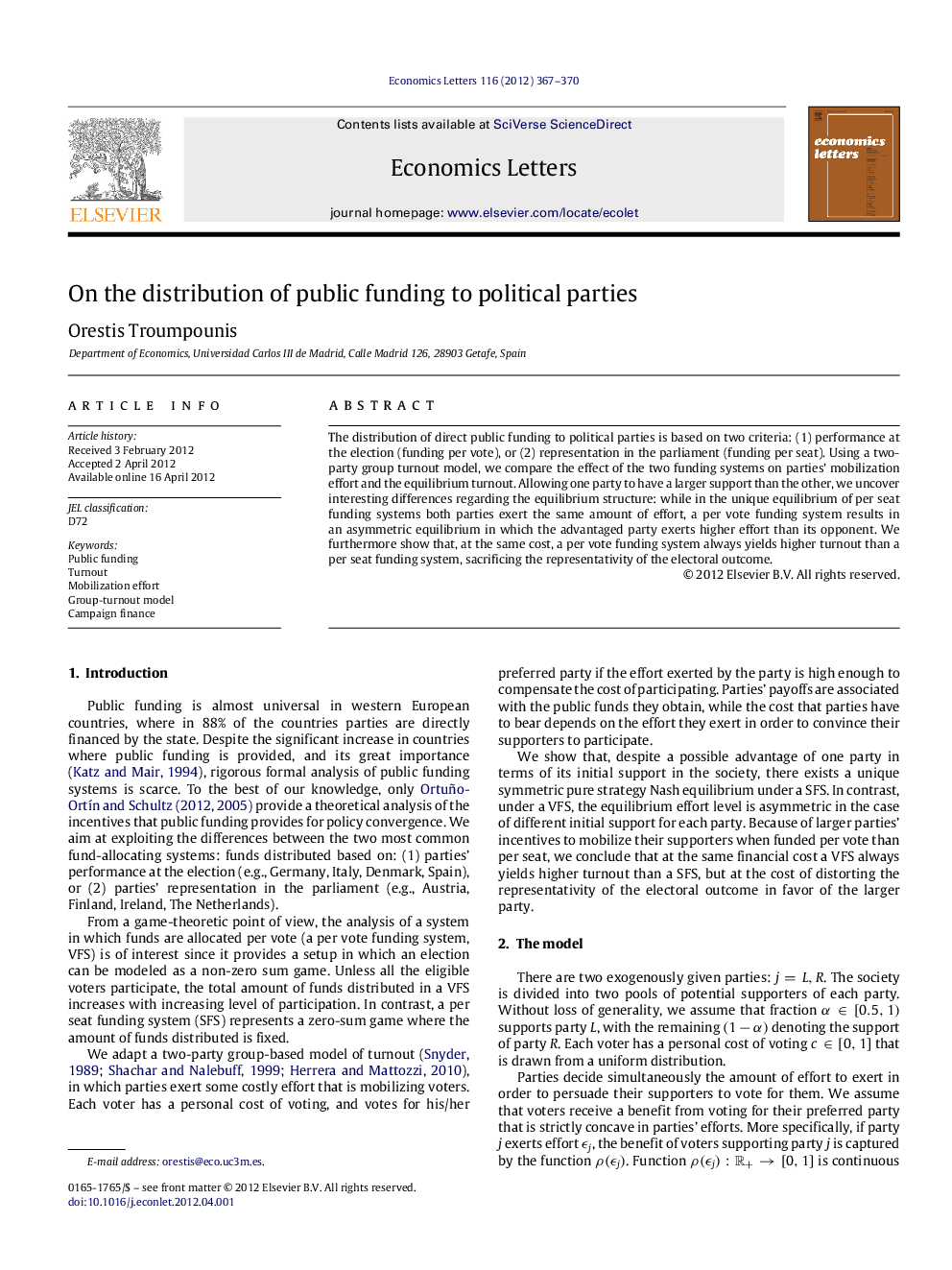| Article ID | Journal | Published Year | Pages | File Type |
|---|---|---|---|---|
| 5060223 | Economics Letters | 2012 | 4 Pages |
The distribution of direct public funding to political parties is based on two criteria: (1) performance at the election (funding per vote), or (2) representation in the parliament (funding per seat). Using a two-party group turnout model, we compare the effect of the two funding systems on parties' mobilization effort and the equilibrium turnout. Allowing one party to have a larger support than the other, we uncover interesting differences regarding the equilibrium structure: while in the unique equilibrium of per seat funding systems both parties exert the same amount of effort, a per vote funding system results in an asymmetric equilibrium in which the advantaged party exerts higher effort than its opponent. We furthermore show that, at the same cost, a per vote funding system always yields higher turnout than a per seat funding system, sacrificing the representativity of the electoral outcome.
⺠We analyze for the first time two widely used systems of allocating funds to parties. ⺠We show that when funds are allocated per seat the equilibrium is always symmetric. ⺠In contrast, when funds are allocated per vote the equilibrium may be asymmetric. ⺠At the same cost, a per vote funding system always yields higher turnout. ⺠A per seat funding system guarantees the representativity of the electoral outcome.
